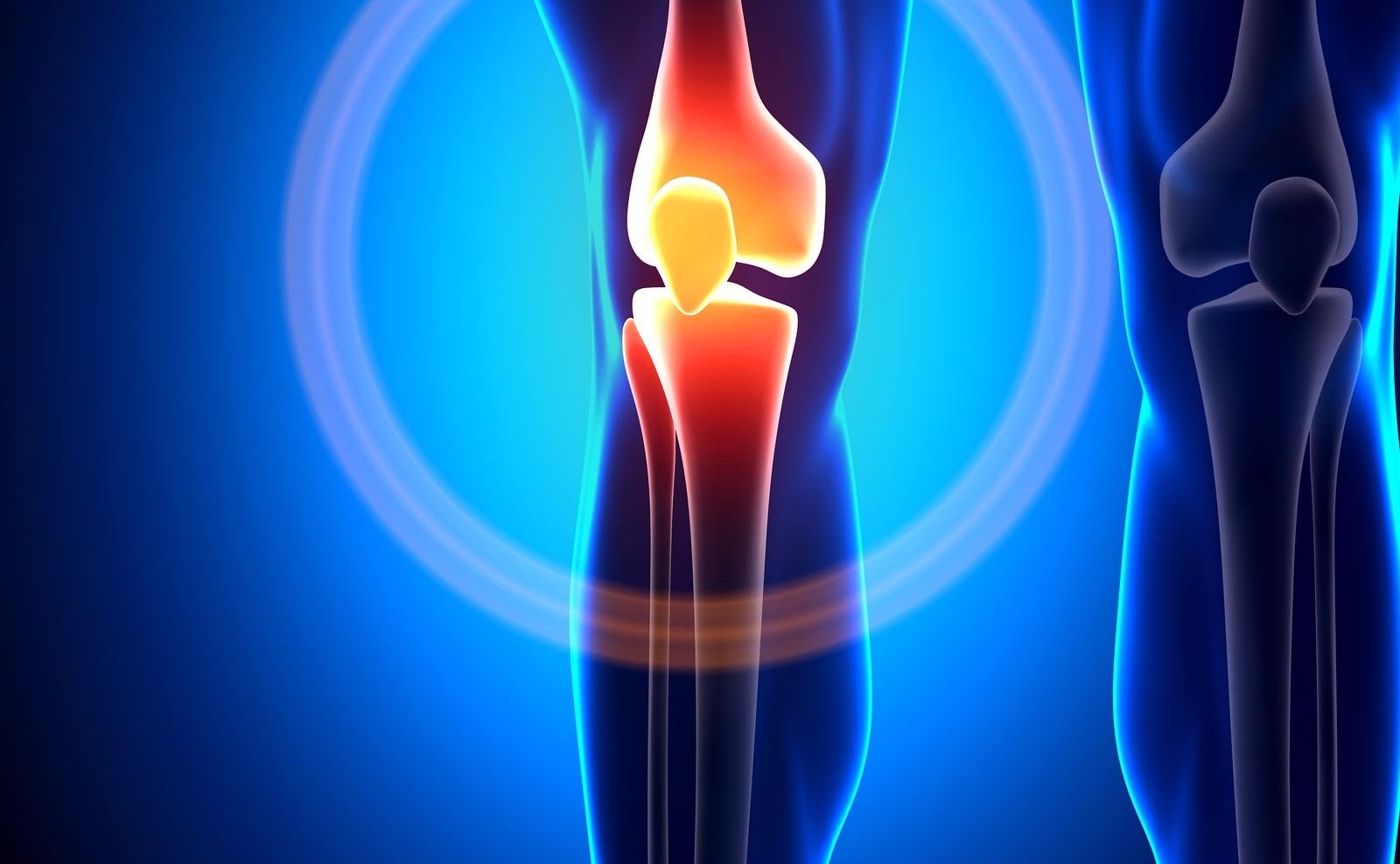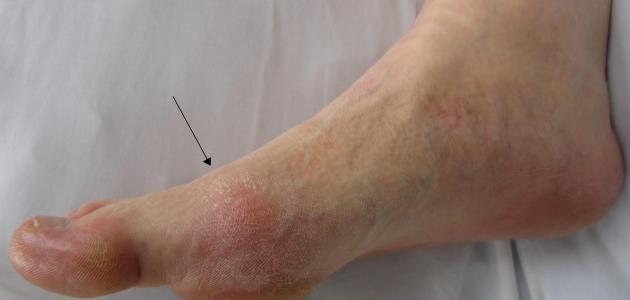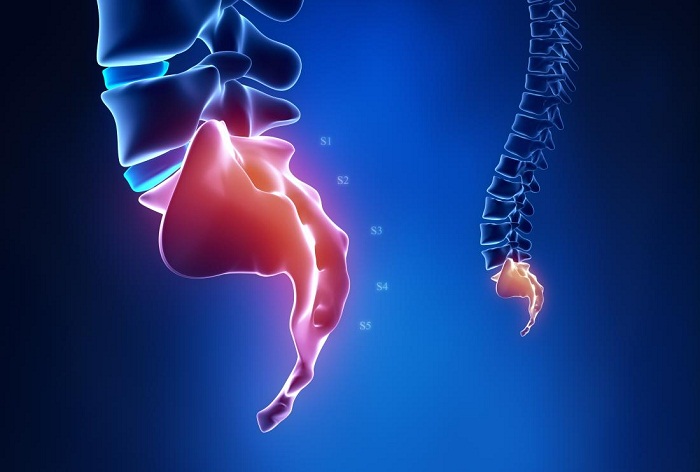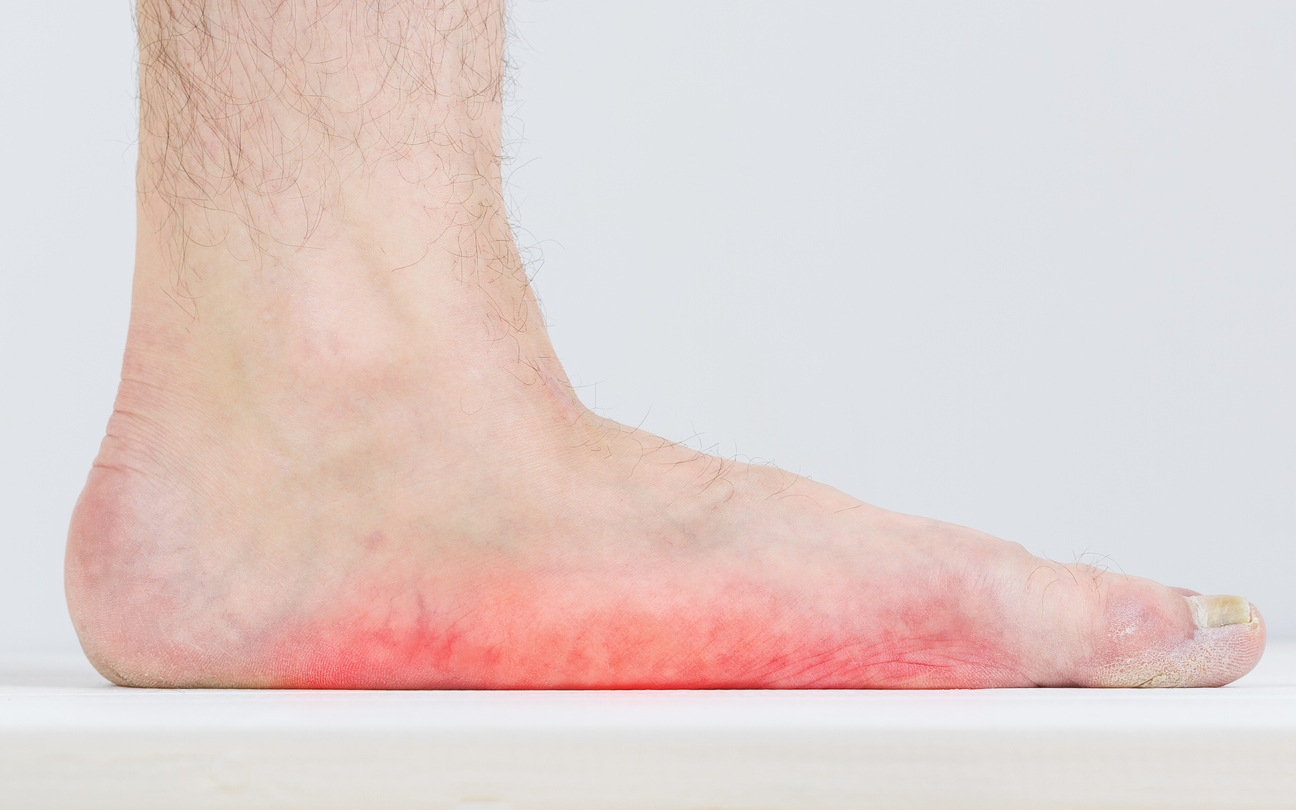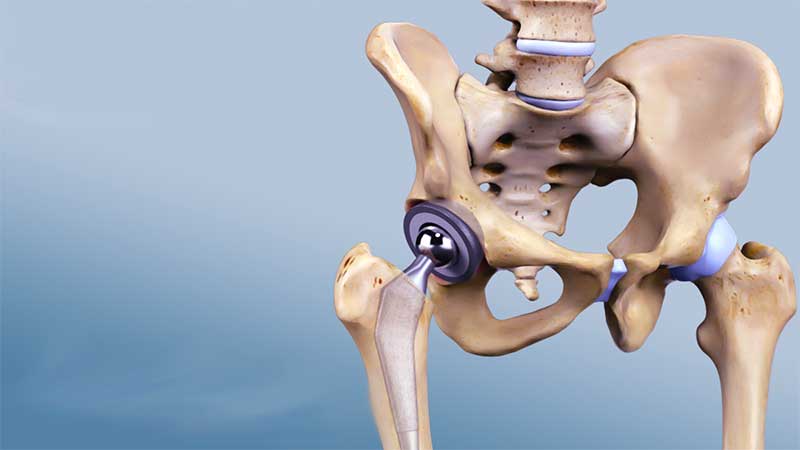!Know the Symptoms of Ankle Ligament Tears and Ways to Prevent Them
Symptoms of Torn Ankle Ligaments, Many people experience torn ankle ligaments, which can cause them to feel pain and discomfort. In the following paragraphs, we will learn in detail about the most important causes that lead to torn ankle ligaments, their symptoms, and various treatment methods to get rid of this condition, in addition to how to prevent it and deal with it properly.

Symptoms of Torn Ankle Ligaments
Torn ankle ligaments are painful injuries that can affect your daily mobility. This injury may occur due to improperly twisting the ankle or as a result of a specific accident. In this article, we will highlight the symptoms of torn ankle ligaments and how to respond to them, including the following:
- Acute Pain:
The back area of the thigh is the most affected area by torn ankle ligaments. The injured person may experience severe pain in this area. - Swollen Ankle:
Another symptom associated with torn ligaments is a swollen ankle. The ankle may become swollen and painful due to the injury. - Bruising:
In cases of torn ligaments, bruising may appear on the ankle. Bruising occurs due to internal damage to the blood vessels. - Strain and Tear:
The degree of torn ankle ligaments varies from mild strain to complete tear of the ligaments. The more severe the symptoms, the more severe the injury. - Foot Deformity:
In some severe cases, torn ankle ligaments can lead to foot deformity. This condition should be closely monitored to avoid complications. - Joint Wear:
If torn ankle ligaments are not properly treated, it may later lead to joint wear. This can cause further problems and pain. If you wish to learn about a treatment that helps rebuild cartilage, click here.
We offer a customized and refined solution for treating torn ankle ligaments with the help of Dr. Amr Amal and his team.
What is a Torn Ankle Ligament?
Torn ankle ligaments are a common injury that individuals suffer from. Ankle ligament tears occur when the ligaments are stretched with excessive force or subjected to severe bending, causing them to partially or completely tear. Ligaments are responsible for supporting the joint and connecting bones, so damaging or tearing them significantly affects the functions of the ankle and foot.
Symptoms of torn ankle ligaments range from swelling and pain in the ankle to difficulty moving and inability to bear weight on the affected foot. Pain and swelling may increase with the severity and duration of the tear, with the injured person experiencing severe pain and difficulty walking. The intensity of the pain depends on the degree of ligament tear.
When you experience a torn ankle ligament, it is crucial to take some actions to alleviate pain and accelerate the healing process. It is advisable to elevate the affected foot as much as possible and apply cold compresses to the injured area to reduce swelling. Appropriate bracing can be used to immobilize the ankle and minimize excessive movement. Your doctor may prescribe non-steroidal anti-inflammatory drugs (NSAIDs) to relieve pain and reduce inflammation.
Causes of Torn Ankle Ligaments
The ligaments in the ankle connect the shin bones to the leg and help stabilize the joint and bear weight. However, sometimes these ligaments can tear due to ankle sprains or injuries. Here are seven common causes of torn ankle ligaments:
1. Sudden Ankle Sprain:
When the ankle is suddenly twisted or sprained in an unnatural way, it can lead to torn ligaments.
2. Excessive Force on the Ankle:
If excessive force is applied to the ankle, such as from falling or tripping, it can cause ligament tears.
3. Improper Sports Activities:
Engaging in sports activities incorrectly or without proper muscle conditioning can increase the risk of torn ankle ligaments.
4. Rapid Changes in Direction:
Quickly changing the direction of movement, such as sharp turns or changes during running, can cause the ankle to stretch unnaturally and lead to torn ligaments.
5. Inappropriate Footwear:
Wearing inappropriate or ill-fitting shoes for a specific activity can increase the risk of torn ankle ligaments.
6. Weakness of Surrounding Muscles:
When the muscles surrounding the ankle are weak, they do not provide sufficient support and stability to the joint, making it more prone to injury.
7. Genetic Factors:
Genetic factors may play a role in increasing an individual’s susceptibility to torn ankle ligaments.
By consulting a medical professional, a comprehensive examination can be performed to diagnose and treat torn ankle ligaments. Treatment may require immobilization, rest, physical therapy, or in more severe cases, surgical intervention to repair the ligaments.
How to Diagnose a Torn Ankle Ligament
A torn ankle ligament is a common condition that occurs when the ligaments are subjected to excessive strain or sudden tension. It can cause the ligaments to stretch or rupture, resulting in ankle deformity and abnormal instability. If left untreated, the condition may worsen.
- Medical History: The diagnosis of a torn ankle ligament begins with a detailed medical history, where the patient is asked about the symptoms, injuries, and the circumstances of the occurrence. The patient should describe what happened and any symptoms they experienced.
- Physical Examination: The doctor will carefully examine the injured ankle. They will attempt to assess the overall condition of the ankle, the extent of pain and swelling, and the patient’s ability to move and walk.
- Functional Tests: The patient may be asked to perform certain movements and tests to evaluate ankle stability and the strength of the surrounding muscles. The doctor may also use X-rays to assess the condition of the bones and joints in the affected ankle.
- Magnetic Resonance Imaging (MRI): In cases of severe tears, the patient may be required to undergo an MRI scan of the ankle. This test provides detailed images of the ligaments and surrounding tissues to accurately determine the extent and location of the tear.
Prompt medical diagnosis for severe torn ankle ligaments should not be delayed. If there are severe symptoms accompanied by significant ankle swelling, the individual should seek medical attention immediately. Qualified physicians will assess the condition and determine the appropriate treatment, whether conservative or surgical, to restore normal ankle function and stability. Don’t forget that regaining knee function and an active life after a torn ankle ligament is possible with our specialized services provided by Dr. Amr Amal.

Complications of Torn Ankle Ligaments
Ankle sprains and torn ankle ligaments are common injuries that individuals may experience, and it is important for them to be aware of the potential complications that may arise from these injuries. Here is a list of some of the most significant complications that may occur due to torn ankle ligaments:
- Chronic Ankle Instability:
This is a common and recurring complication for individuals who suffer from recurrent torn ankle ligaments. This condition makes it difficult to walk, run, and engage in physical activities, affecting the patient’s daily quality of life. - Chronic Pain:
Pain may persist for an extended period after a torn ankle ligament, as the body requires around 8 weeks for complete healing of the torn ligaments. The pain persists during this period, affecting the daily life of the injured person. - Ankle Stiffness:
Ankle stiffness may occur due to recurrent ankle sprains and repeated ligament tears. The ankle becomes less flexible and mobile, impacting the person’s ability to perform daily tasks easily. - Ankle Swelling:
Swelling is a common complication resulting from torn ankle ligaments. Swelling occurs due to the accumulation of fluids in the damaged tissues. Swelling can cause additional pain and difficulty in movement. - Early Arthritis:
Recurrent ligament injuries and untreated ankle sprains are contributing factors to the development of early arthritis. This can lead to joint damage and an inability to perform daily activities easily.
In general, individuals suffering from torn ankle ligaments should adhere to the necessary treatment and rehabilitation program to help minimize the potential complications that may arise from this injury. Consulting a medical professional is essential to evaluate the condition and determine the most appropriate treatment plan for each case.
What is the Treatment for Torn Ankle Ligaments?
Many people may experience torn ankle ligaments due to injury or ankle sprains. When this tear occurs, proper treatment is essential to ensure ligament healing and prevent further complications. In this article, we will look at the appropriate treatments for torn ankle ligaments, including the following:
- Complete Rest:
After the tear, adequate rest for the affected foot must be provided. It is advisable to avoid walking on it as much as possible, and crutches can be used to facilitate movement without putting pressure on the injured ankle. - Applying Ice:
Applying ice is essential for reducing swelling and inflammation resulting from torn ligaments. It is recommended to apply ice packs to the affected area for 20 minutes, approximately every two hours. - Using a Compression Bandage:
A compression bandage can be applied to the affected area to help reduce swelling and promote the healing process. Hand braces can also be used to treat torn ankle ligaments in reducing joint movement and relieving pain. - Elevation:
It is recommended to elevate the affected foot while sitting or lying down, as this helps reduce swelling and improve blood flow to the injured area. - Taking Pain Medication:
In cases of severe pain, mild pain relievers such as paracetamol can be taken under the supervision of the attending physician.
Dr. Amr Amal possesses the expertise and proficiency to accurately diagnose and treat torn ankle ligaments.
Ways to Prevent Torn Ankle Ligaments
One of the common injuries that occur in the ankle is torn ankle ligaments. To protect the ankle and avoid this painful injury, a few simple preventive measures can be taken. In this brief list, we will discuss some effective ways to maintain strong and flexible ankle ligaments:
- Be sure to wear appropriate shoes:
Choose shoes that provide proper support for the ankle and heel area. Shoes with flexible and non-slip soles are preferred. - Activate the muscles surrounding the ankle:
You should regularly train the leg and ankle muscles to strengthen and increase their flexibility. Effective exercises may include stretching, stability exercises, and muscle strengthening. - Use braces and supports:
Protecting the ankle during intense physical activities or strenuous sports by wearing braces and supports can help reduce the risk of torn ankle ligaments. - Strengthen the overall body frame:
In addition to training the ankle, it is important to strengthen the other muscles in the body, especially those in the legs and hips. This can reduce excessive stress on the ankle. - Gradually increase exercise intensity:
Before starting any intense physical activity, perform warm-up and stretching exercises for the ankle and surrounding muscles. This helps prepare the body for movement and reduces the risk of injury. - Maintain a healthy weight:
Excess weight increases the body’s pressure on the ankle and raises the likelihood of ligament tears. It is important to maintain a healthy weight through a balanced diet and regular physical activity. - Avoid sudden, forceful movements:
Avoid jumping or playing in an unsafe manner, and avoid sudden, forceful movements that could put stress on the ankle and lead to injury. - Consult a doctor:
In case of persistent ankle pain or injury, it is advisable to consult a medical professional to assess the condition and guide the appropriate treatment.
Recovery Time for Torn Ankle Ligaments
The recovery time for torn ankle ligaments is considered one of the medical conditions that requires sufficient time for complete healing. The recovery period typically ranges from 6 to 8 weeks, and this may vary depending on the degree of the tear.
Ankle ligaments are responsible for stabilizing and supporting the ankle joint, and they are strong tissues that connect bones and joints together. A tear can occur in these ligaments due to exposure to severe trauma or the foot rolling over an uneven surface. It is important to note that when one of the ligaments is torn, severe swelling and pain can occur in the ankle area, which can significantly impact the patient’s daily life.
It is crucial to accurately diagnose the degree of the ankle ligament tear to determine the appropriate treatment. In cases of minor tears, non-surgical treatment methods such as rest, applying ice, and elevating the affected foot can be used, in addition to strengthening the surrounding ankle muscles. However, in cases of severe tears, surgical intervention may be necessary.
Although the recovery time for torn ankle ligaments requires an extended period, the patient must adhere to the doctor’s instructions and follow the recommended physical therapy program after the active treatment period. This helps strengthen the ankle’s strength and stability, reducing the risk of future injuries. We offer comprehensive guidance and treatment for torn ankle ligaments to assist in achieving a rapid and effective recovery with Dr. Amr Amal.
How Long Does it Take to Treat a Torn Ankle Ligament?
The ankle is one of the essential joints in the human body, and its injury is common, occurring due to various causes such as falls, excessive foot twisting, or intense sports movements. One example of these injuries is torn ankle ligaments.
Torn ankle ligaments are a prevalent injury, and treatment procedures vary depending on the severity of the tear. In the case of a mild ankle tear, treatment may take two to four weeks or more before the patient can resume normal daily life.
For more severe and moderate ankle ligament tears, recovery may take 6 to 8 weeks. To prevent further injury, the ankle is immobilized and placed in a cast without bearing any weight for 4 to 6 weeks in some cases.
In some severe cases, the tear may result in a complete tear of the ligaments, and medical or surgical treatment will be required. The primary treatments for torn ankle ligaments include immobilizing the affected ankle and reducing movement using a cast or flexible bandages, rest, and applying ice to alleviate pain and swelling.
Does a Torn Ankle Ligament Require a Cast?
There is an ongoing debate about the effectiveness of using a cast in treating torn ankle ligaments. Some experts believe that after surgery, the patient may need a cast for 3 to 4 weeks before starting physical therapy. However, the use of a cast to treat torn ankle ligaments is not common in all cases but is only done in certain cases depending on the severity of the injury the individual is experiencing.
It depends on the doctors’ assessment of the severity of the ligament tear. In cases of severe ligament tears, some doctors may use a cast as part of the treatment. The purpose of the cast is to restrict the movement of the damaged ligaments, prevent further damage, alleviate pain, and promote healing. Often, using a cast is the first step in treating ligament tears, where the cast is applied for a specific period based on the severity of the injury.
In general, reinforcement, flexible bandages, or braces can be used to treat ligament tears. Braces help restrict the movement of the ligaments, prevent further damage, and reduce pain. Therefore, using a brace is a common option as initial treatment for ligament tears. The need for a cast depends on the degree of ligament tear and the doctors’ assessment.

Who is the Best Doctor for Treating Ankle Ligament Tears in Cairo?
Many people suffer from ankle ligament tears, a medical condition that requires immediate attention and proper treatment for quick recovery. In Cairo, Dr. Amr Aml is the ideal choice for treating ankle ligament tears.
Dr. Amr Aml is known for his advanced skills in orthopedic and joint surgery, especially in treating ankle ligament tears. His extensive experience and deep knowledge of the latest techniques and surgical procedures ensure effective treatment and excellent outcomes for patients.
Dr. Amr Aml graduated as an orthopedic surgeon from Ain Shams University Medical School with honors. He has gained extensive experience in orthopedic surgery through practice at several prestigious hospitals and medical centers.
Dr. Amr Aml specializes in providing ideal treatment for ankle ligament tears, whether it requires conservative treatment or surgical intervention. He employs modern and innovative techniques to rebuild damaged ligaments and restore normal ankle function.
The orthopedic clinic prioritizes providing comprehensive care to patients. The medical team focuses on offering necessary consultations and guidance to patients before, during, and after treatment. Dr. Amr Aml uses the latest medical tools and equipment to ensure the success of the procedure and proper recovery for patients.
The feedback and ratings from previous patients serve as proof of Dr. Amr Aml’s efficiency in orthopedic surgery. He has excellent ratings and a high level of trust from patients who have been treated for ankle ligament tears. He has achieved remarkable results and improved the quality of life for patients due to his experience and high skills in the field.
It is evident that Dr. Amr Aml is the best choice for treating ankle ligament tears in Cairo. If you are suffering from this condition, you should schedule an appointment now with Dr. Amr Aml and benefit from his experience and skills to get the ideal treatment you need.





